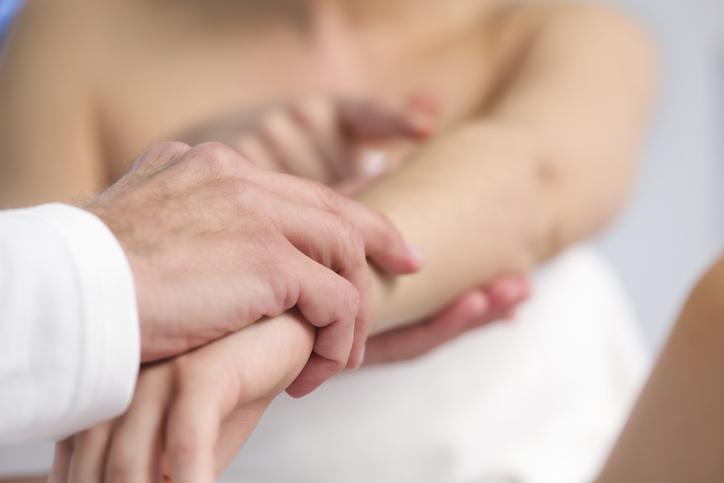Keloid removal techniques
There are a few techniques that are used to remove keloids, and this may depend on the size and location of the keloid.
Keloid removal techniques include:
- Surgical removal removes the keloid and some of the surrounding tissues

- Corticosteroid injections which reduces the fibrous tissue and collagen production in the keloid and surrounding area
- Cryotherapy destroys the cells of the keloid, causing it to eventually fall off. You many require multiple treatments to fully heal the keloid
- Superficial radiation therapy, or SRT, similarly destroys the cells of the keloid mass
- Laser treatment can also reduce the size or hyperpigmentation of the keloid
No technique can guarantee that the keloid will not return, although it may take years for it to form again once it has been removed.
Surgical removal procedure
First the area will be numbed with a local anesthetic or a topical anesthetic depending on the size and depth of the keloid. Once the area has been numbed, the incision will be made and the area around the keloid will be removed as well, and then closed with stitches. The entire keloid is removed so that the likelihood of it reforming is decreased.
Once it is removed, other treatments may be suggested during the recovery period. These keloid treatments in New York will be aimed at minimizing the appearance of the new scar and allowing the site to properly heal. Dr. Scarpidis will have follow up appointments scheduled if he feels it is necessary to monitor the healing process of the surgical site.
Recovery after keloid removal
If surgery was opted for then the incision site will take up to six weeks to fully heal. Any stitches can often be removed or will dissolve within the first couple of weeks.

As the skin recovers, other treatments such as moisturizing oils or creams may be suggested to minimize the scarring, as well as silicone pads or other applications to apply pressure to the healing area to minimize the scar. Sometimes even scar massage can be suggested to help prevent the formation of fibrous tissue that might hold the skin in a tense position.
Dr. Scarpidis can suggest the best combination of treatments to remove or reduce the keloid after assessing it in person.

Ask Julia
Hi! My name is Julia. I am the Chief Plastic Surgery Specialist at Scarpidis Aesthetics.
Feel free to ask me any questions, I'll be happy to help!
Ask now
FAQ
Can keloids be cancerous?
Keloids themselves are benign, but uncontrolled growth could be a sign of skin cancer. It is best to have any uncontrolled growth checked out.
Can I prevent a keloid from reforming?
There are many treatments for keloids that can help reduce the likelihood of the keloid reforming, but there is no guarantee that it will not reform at some point in the future.
Can I remove them myself?
For smaller keloids some DIY freezing products are available, but not recommended. It is always wise to work with a certified professional such as Dr. Scarpidis to ensure that no unnecessary damage occurs to your skin.
How many laser treatments would I need to reduce a keloid?
This depends on the size of the keloid in question, but generally a few treatments are necessary to reduce its overall height and discoloration.
Are there any risks to having corticosteroid injections?
Overuse of corticosteroids can have detrimental effects on your skin such as pigmentation changes or in rarer instances it can lead to tissue degradation. Any concerns with the use of corticosteroids can be discussed with Dr. Scarpidis in your consultation.
Schedule a consultation
If you’re considering undergoing keloid removal in NYC, we invite you to schedule a consultation with Dr. Scarpidis today. During your private meeting in his midtown NYC office, he will carefully evaluate your problem areas, before outlining a customized treatment plan designed to heal your keloid scars.
Call us today: (212) 951-0505
Schedule now


